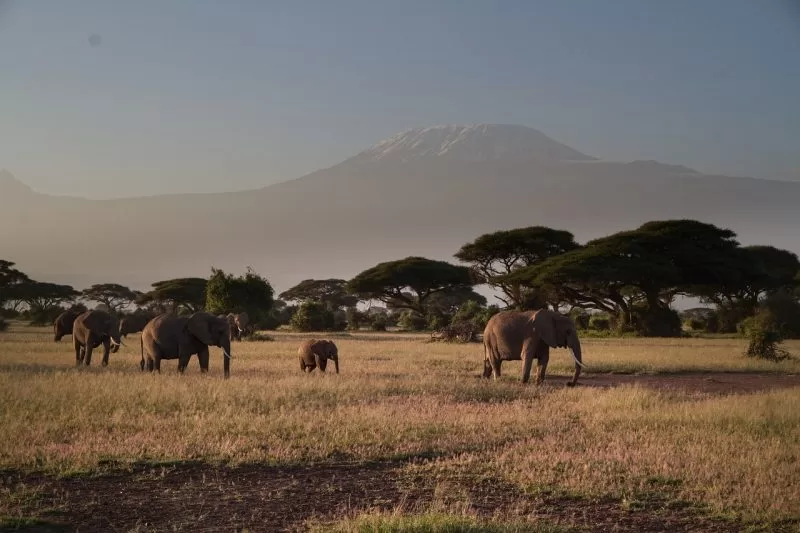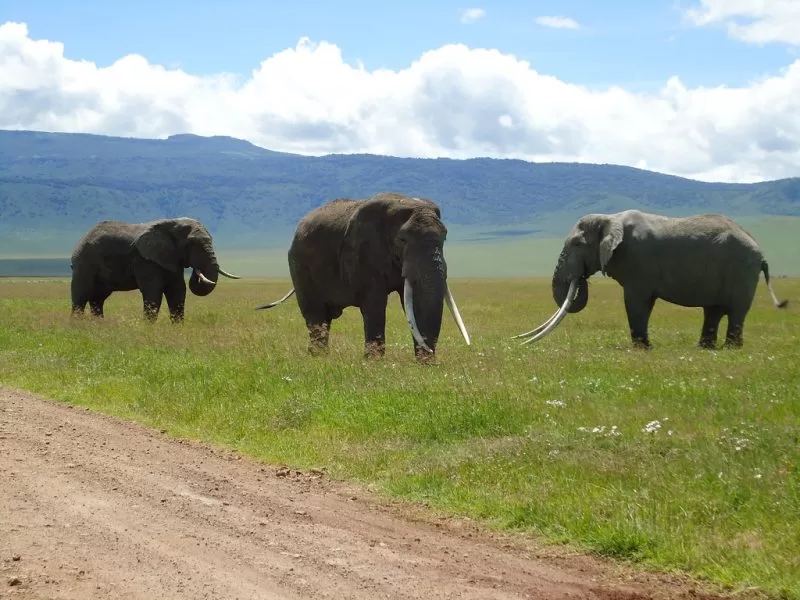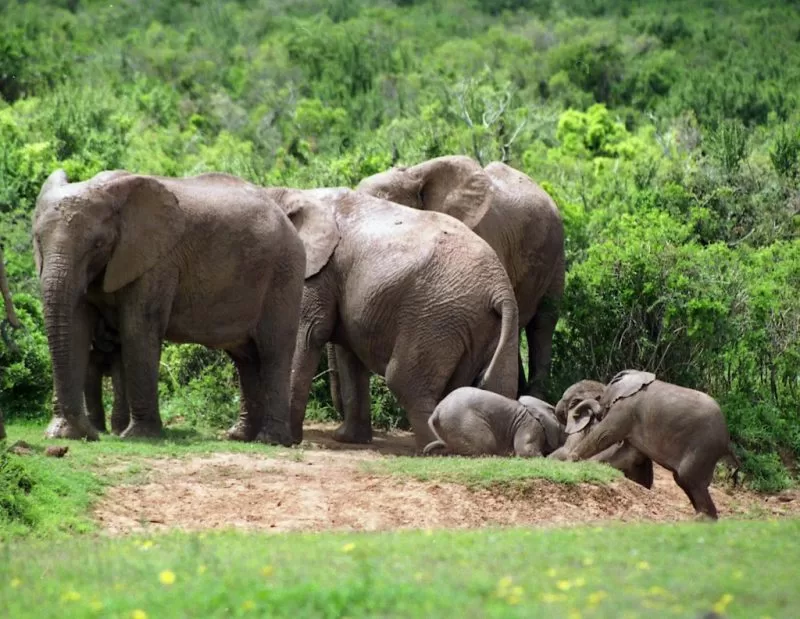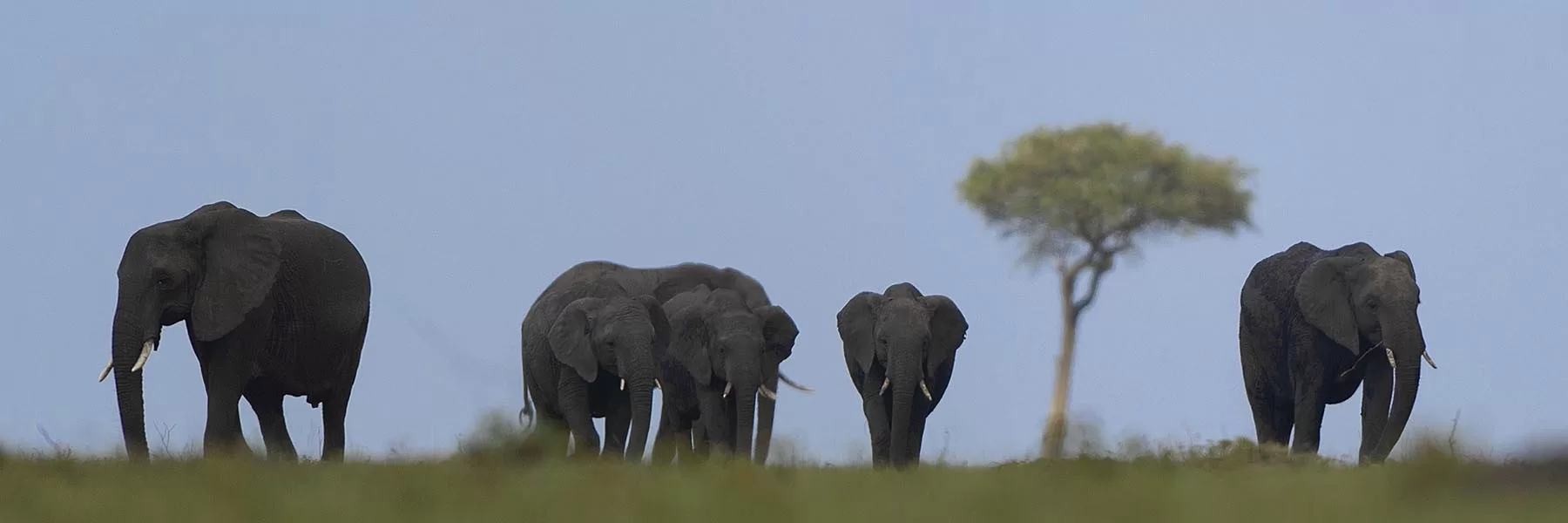Elephants are known to be the land’s largest mammals. Despite their massive size, they are often called ‘gentle giants’ due to their humble nature. These animals move safely from one place to another, following their matriarch. While the mother keeps an eye on the baby elephants, sightings of high-spirited teenage elephants are common. Mature male bull elephants are frequently seen roaming the savannahs alone or leading younger male elephants. The vast savannahs and lush landscapes of Africa are among the best places to see elephants in their natural habitat.

Elephants are known for their intelligence and close-knit communities. They are peaceful animals, although their height might be intimidating to some. Africa is the best place to observe these animals in their natural habitats. Moreover, going on an elephant safari is a worthwhile experience, as one can see various dynamics within their groups. The African elephant is divided into two species: The Forest Elephant and The Bush Elephant. African elephants are distributed in various parts of the continent.
Check out these seven best places to see elephants in Africa:
Botswana
Chobe National Park
Chobe National Park is a famous park in Botswana and has the largest population of elephants on the entire African continent. This national park is known as one of the many best places to see elephants in Africa. There are estimated to be more than 1,00,000 elephants living in large herds. It is impossible to visit Chobe and miss out on elephants, as they are spotted throughout the park.

Elephants in Chobe are usually sighted near the banks of the Chobe River and the surrounding floodplains. As the dry season progresses from June to November, tens of thousands of elephants line up on the river banks to quench their thirst, play with each other, and enjoy a good swim. A river cruise across the Chobe River offers a unique perspective on elephants and a truly majestic wildlife spectacle.
Okavango Delta
The Okavango Delta is the largest inland delta in Africa, known for its sprawling grassy plains that flood seasonally and become lush animal habitats. Due to the year-round presence of water and plant life, approximately 18,000 elephants reside in the delta.

Thousands of African elephants migrate between Okavango and neighbouring wildlife reserves in the Chobe, Linyanti, and Savuti regions. The herds are also spotted near the Okavango River, which further serves as a valuable source of water in an otherwise arid landscape. Visitors can choose between a traditional mokoro trip or walking safari, an elephant back safari, and a classic sundowner boat cruise in the Okavango Delta. Here, visitors also have the chance to interact with tame elephants and learn more about them.
Namibia
Damaraland
It is not a typical sight to see elephants living in deserts. But, in Damaraland, Namibia, the unique desert elephants have successfully adapted to the inhospitable conditions. Desert elephants are not a separate species but are African bush elephants. They have become accommodated in the Namib and Sahara deserts of Africa. Compared to Savanah elephants, desert elephants tend to have smaller bodies, longer legs, and larger feet and can survive without water for days. They migrate to faraway distances for food, and unlike other elephants, they do not damage trees and bushes due to sparse vegetation.

These elephants are found in Damaraland and Kaokoland, north of Namibia, where their large families tend to roam the river beds alongside Zebra, Giraffe, and black rhinos. Another site to witness the elusive desert elephants is the Ugab River, which stretches 500 kilometres in the Damaraland region. Visitors can enjoy game drives and walking safaris in a private concession to witness this animal species.
Kenya
Amboseli National Park
Lying in Southern Kenya, Amboseli National Park is known for offering the perfect backdrop of the incredible Mount Kilimanjaro and herds of elephants standing in front of it. There are over 1,500 elephants that are spread across Amboseli’s wetlands, woodlands, and savannahs. Due to the abundant water found in a natural swamp created by Mount Kilimanjaro’s melting snow, elephants are seen all year round in the park.

Amboseli National Park also houses the largest elephant research and conservation program in the world. The elephants of Amboseli have been studied since 1972, and biologists have discovered various behaviours in these animals. There are many lodges and camps in the national park that arrange elephant-focused game drives. The game drive introduces visitors individually to single herds and then emphasizes the interaction between herd members.
Tanzania
Ngorongoro Crater
Ngorongoro Crater is an extinct volcanic caldera in the Eastern Great Rift Valley, lying north of Tanzania. This crater has ample wildlife and bird species. Among the many animals living in Ngorongoro Crater, elephants are also occasionally seen roaming in their natural surroundings.

Ngorongoro Crater has a healthy elephant population, found scattered in wooded and swamp areas. One can mostly observe solitary males or bull elephant groups in the crater.
Tarangire National Park
Among Tanzania’s Northern Circuit reserves, Tarangire National Park is not frequented as much as the Serengeti. But it is prominent for its elephants, which have a red coating thanks to the park’s burnt orange mud that these animals kick up as they walk. Tarangire has an elephant population of around 2,500, boasting the largest elephant population in northern Tanzania. Furthermore, their numbers have been steadily increasing with every passing year.

An elephant in Tarangire National Park
Elephants in Tarangire National Park are seen in abundance during the dry seasons near the Tarangire River. The river acts as a reliable source of water for elephants travelling for miles, as well as other animals in neighbouring areas.
South Africa
Addo Elephant National Park
Addo Elephant National Park, a diverse wildlife conservation park, is conveniently located along Cape Town’s popular Garden Route. It is also the most accessible park, situated just an hour’s drive from Port Elizabeth. As the name suggests, Addo is famous for having the densest African Elephant population. The park was built in 1931 to protect just 11 remaining elephants, but today it is home to more than 600 of them.

The national park’s small size makes elephant sightings relatively easy. During the scorching days, herds of elephants congregate near the park’s waterholes, where visitors can enjoy their antics.
Elephants continue to remain the African continent’s most iconic animal. Unfortunately, in certain parts of Africa, they suffer from poaching and habitat loss that have led to a decrease in their population. Many African reserves and national parks actively participate in protecting elephants and helping them thrive in the wild.
From the sprawling plains of Botswana’s Chobe National Park to the arid landscapes of Namibia’s Damaraland, each place in of Africa is regarded as the best to see elephants as every place has unique insight into the lives of these magnificent creatures. So, begin your journey to the heart of Africa and experience the magic of witnessing elephants roam freely in their natural splendor.
If you loved reading this story, then subscribe to our blog here (it will ask to verify your email) to get inspiring travel stories and trivia delivered to your email. Stories about wildlife trivia, cultural experiences, curated luxury hotel lists, underrated places to travel, polar journeys and much more.











